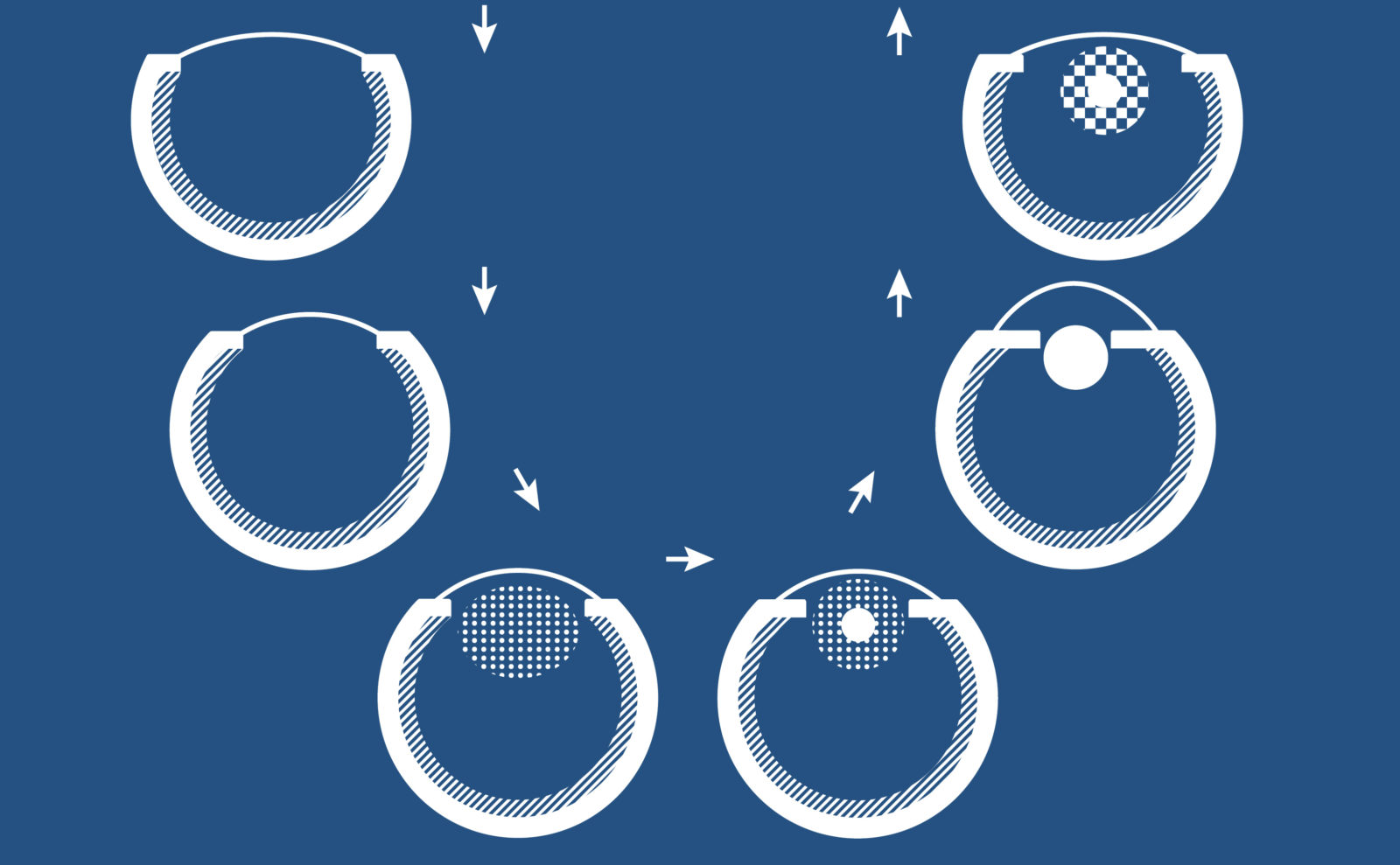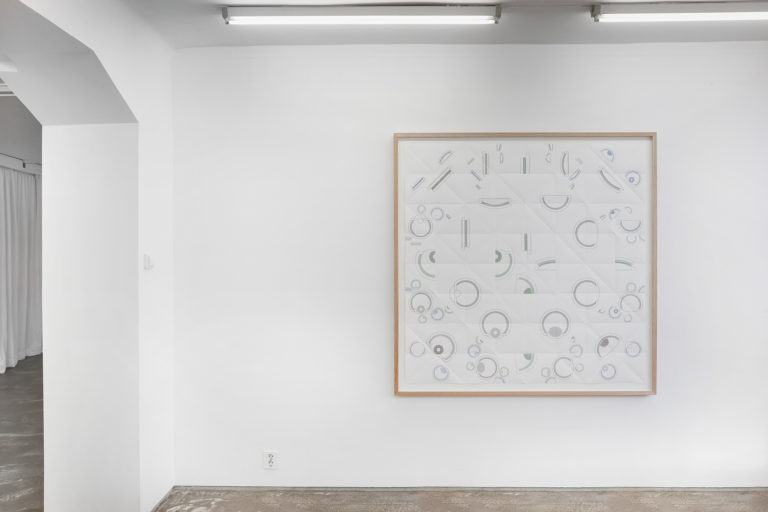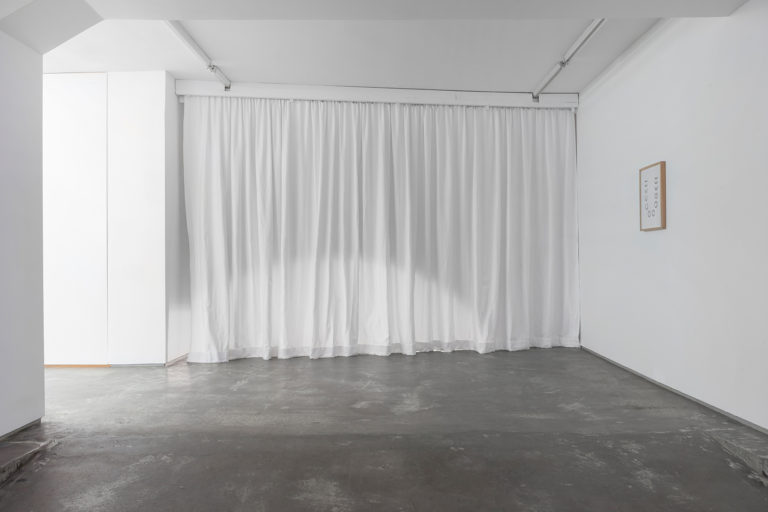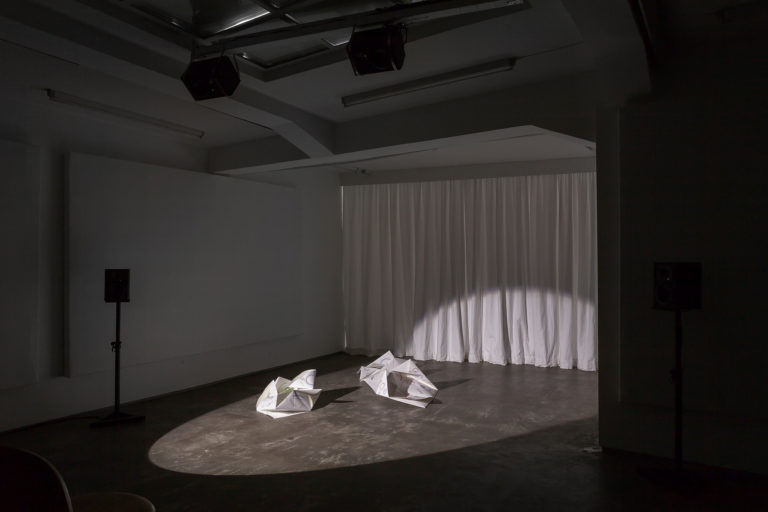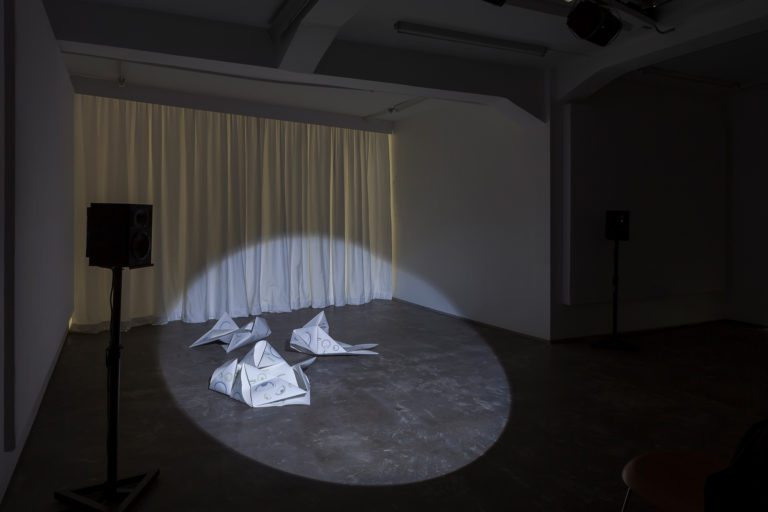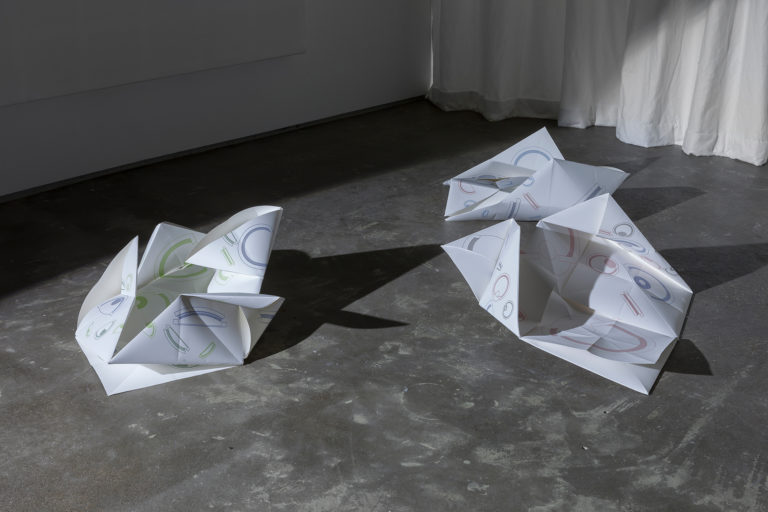OSL contemporary is proud to present its second exhibition by the Norwegian artist Toril Johannessen. The exhibition comprises the new work The Invention and Conclusion of the Eye, an audio play about vision. The play narrates the story of how the eye emerged and evolved in nature, and how it may become expendable as a sense organ in the future, and eventually retreat. What would a post-visual world be like, and how would we perceive it? Johannessen’s audio play sets out to investigate this subject, underlining how the transition away from an optics-based visual system involves that we see with our brains and not our eyes, allowing us to create mental images.
The audio play is led by the character Mx, who works on an article for a reference book about the evolution of the eye, and its future. In audio notes for ***, a predictive analytics software designed by Mx, three assertions are presented: 1) We see alone, but everything we see is the same. 2) The world we live in is about to become optically invisible. 3) The eye will retreat with time. Mx claims that the visual cortex will increasingly be used to create mental images based on calculations and abstractions, which will gradually make the eye irrelevant. Mx discusses her findings with (Z), an image editor working on an assignment for Mx. (Z) has made a diagram, on display in the exhibition space, based on a study conducted by the Swedish scientists Dan-E. Nilsson and Susanne Pelger (“A Pessimistic Estimate of the Time Required for an Eye to Evolve”, 1994). The scientists simulated a model of the eye to find out how many generations were required for an eye to evolve. Building on the scientists’ view that the eye evolved from a light-sensitive spot, Mx investigates if the eye will de-evolve with the current constant exposure to high technology that arguably shapes the way we see and perceive. Her desire is to get direct access to the invisible by bypassing the optics of the eye that create images of the visual world on our retina, and instead perceive extrinsic properties through abstraction and cognition. Although Mx is driven by the rational and mathematical, she has a tendency towards superstition, displayed by a magpie featured in the audio play, which she is led to believe signifies bad luck, and a set of paper fortune tellers exhibited in the gallery room. Mx’s blind spot where her superstition is concerned, reminds us that other factors than the purely scientific influence our vision and the future of it.
The use of storytelling and fiction over positivism to treat a largely scientific topic, is paradigmatic of Johannessen’s longstanding interest in knowledge, and how it is gained in the world. Her practice often engages methods and source material from the domains of science, and how physical processes we might think of as biologically determined, are also culturally and technologically conditioned. Thematically, her work spans a wide range of interests, from visual perception to linguistics; impossible energy cycles; alternative methods for time measurement; optical illusions; and spatial disorientation. By combining historical records with fiction and her own investigations, she applies a subjective, critical and playful view on various forms of knowledge production, presented through media including photography, optics, archival material, linguistic concepts, statistics and geometry.
Vision and language, and ways that environmental, cultural and technological conditions influence perception, has been a recurring theme in Johannessen’s work in recent years. The artist's book Unseeing (Dublett, 2013) demonstrates her theoretical interest in visual perceptions, metaphors and optical illusions, speculating on the possibilities of learning and unlearning certain ways of seeing, and the metaphors we employ to describe the world. In Johannessen’s book, unlearning – an attempt to take on another perspective and to learn to know something else than what we already know – is argued to actively change our visual system. The Invention and Conclusion of the Eye is a further take on this assertion; no longer only a matter of unlearning to see through culturally-conditioned perspectives, the novel installation asserts that the very act of seeing will be deemed irrelevant for future human beings. Through sound and fictional elements, Johannessen’s immersive audio work highlights the importance storytelling, mental images and the imagination has for seeing.
A Norwegian version of The Invention and Conclusion of the Eye was shown at Hordaland Kunstsenter in Bergen earlier this year (Oppfinnelsen og avviklingen av øyet, 9 June – 20 August 2017).
Toril Johannessen (b. 1978, Trondheim) lives and works in Tromsø. She obtained her MA in Fine Arts from Bergen National Academy in 2008 and attended the Mountain School of Arts in Los Angeles, CA, in 2011. Her work has been widely exhibited at institutions and galleries in Norway and internationally, including at DOCUMENTA (13) (2012) and the 13th Istanbul Biennial (2013). Recent solo exhibitions include Unlearning Optical Illusions, AROS, Århus (2017), previously shown at Trondheim Kunstmuseum (2016), and Kabuso, Øystese (2016); NORSK NATUR with Tue Greenfort, Museum of Contemporary Art, National Museum, Oslo (2016); AA-MHUMA-AITI-KITTEKITII, OSL contemporary, Oslo (2015); and Teleportation Paradigm, UKS, Oslo (2013). Johannessen’s work has been part of numerous group exhibitions, including STAGES: Drawing the Curtain, Plug In ICA, Winnipeg (2017); What Remains, Fotogalleriet, Oslo (2017); Foreign Places, WIELS, Brussels (2016); Norsk Skulpturbiennale, Vigeland-Museet, Oslo (2015); Allegory of the Cave Painting, Extra City Kunsthal, Antwerpen (2015); On the moment of change (…), ARTSPACE, Auckland (2014); Paradise Reclaimed, Galleri Nord-Norge, Harstad (2014); Nouvelle Vagues, Palais de Tokyo, Paris (2013); Curiosity: Art and the Pleasures of Knowing, deAppel, Amsterdam and Turner Contemporary, Margate (2013-14); Machine Worries, Machine Hearts, Blank Projects, Cape Town (2012); Biennale Bénin, Cotonou (2012); and The End of Money, Witte de With, Rotterdam (2011). Johannessen’s work is included in key private and public collections, including the Preus Museum, Horten; The National Museum of Art, Architecture and Design, Oslo; KODE Bergen Art Museum, Bergen; and Colección Isabel y Agustíne Coppel (CIAC), Mexico City.
The Invention and Conclusion of the Eye is co-produced with Plug In ICA, Winnipeg and Hordaland Kunstsenter, Bergen.
---
During opening hours the play will start every hour, on the hour.
Maggie Nagle, actor
Ken Gregory, sound
